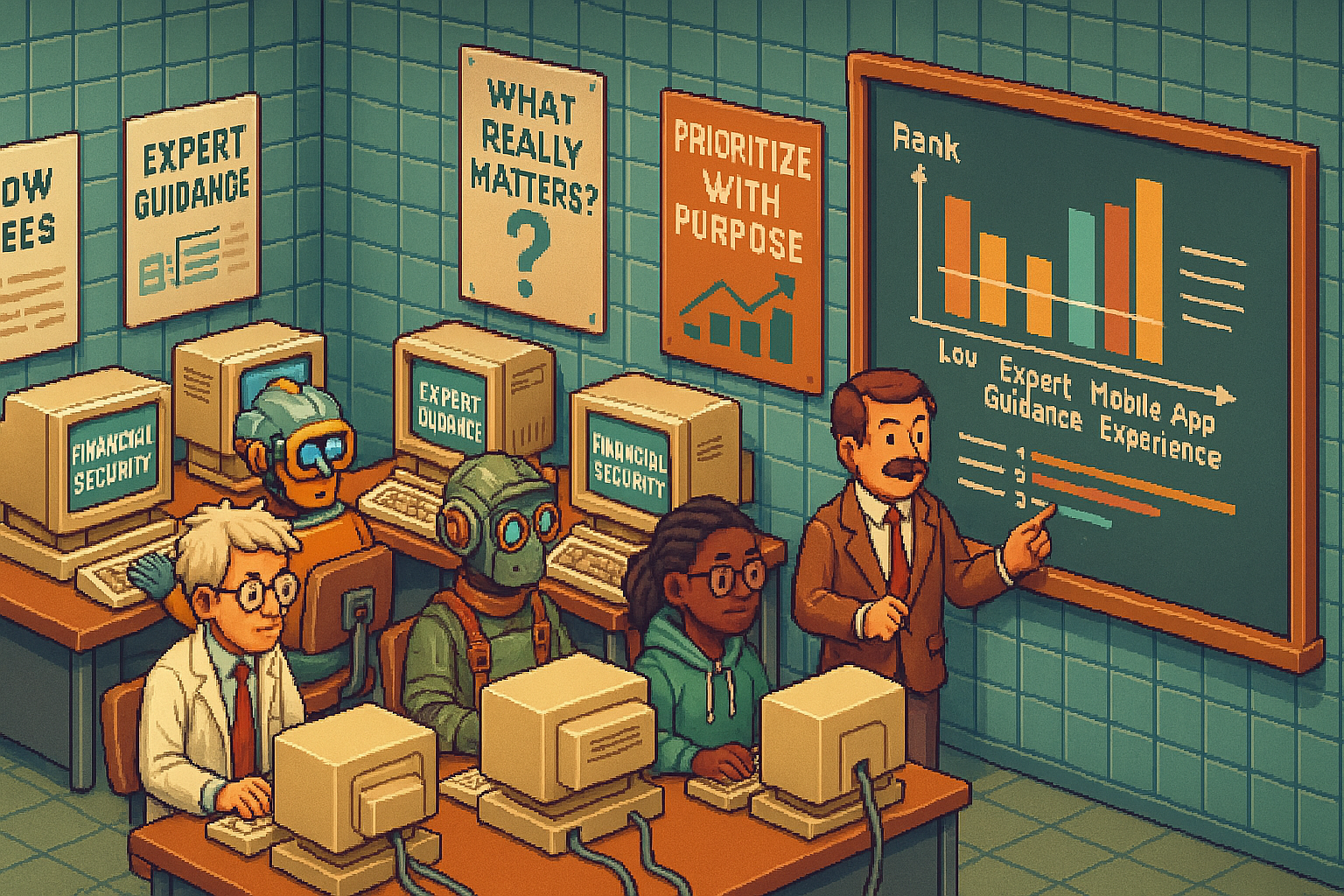MaxDiff Analysis
Discover which features, benefits, or attributes your customers value most using AI personas in a MaxDiff analysis. This synthetic research approach forces trade-offs to reveal true priorities, eliminating the "everything is important" problem that plagues traditional rating scales. Get clear, actionable rankings of what drives customer decisions without the complexity of recruiting and surveying hundreds of real respondents.

What is it Used For?
MaxDiff analysis determines the relative importance of product features, messaging elements, or service attributes by forcing respondents to choose the most and least important items from sets of options. This market research methodology helps businesses prioritize product development roadmaps when resources are limited, identify which marketing messages resonate strongest with target audiences, understand competitive advantages by mapping feature preferences across market segments, optimize user experience by focusing on the most valued interface elements, guide pricing strategy by understanding which features justify premium positioning, and validate assumptions about customer priorities with data-driven insights. The methodology works particularly well when you have many potential features to evaluate, need to understand trade-offs between competing priorities, or want to segment markets based on different preference patterns.
Real-World Example
I was working with a financial services company trying to understand where to position their product in an incredibly competitive market. They had dozens of potential features and benefits they could emphasize, but limited marketing budget and development resources.
The challenge was massive: how do you understand what matters most across thousands of different customer types without spending months and hundreds of thousands of dollars on traditional market research?
We decided to go big. Instead of surveying a few hundred people, we generated 5000 AI personas representing different segments of the financial services market - from tech-savvy millennials to retirement-focused baby boomers, from small business owners to high-net-worth individuals.
We ran a comprehensive MaxDiff analysis testing everything from functional features (think of things like "low fees" and "mobile app experience") to emotional benefits (like "feeling financially secure" and "having expert guidance.") Each persona evaluated multiple sets of features, choosing what mattered most and least to them.
The results can be eye-opening. You can discover segments that over-indexed for features the company may have never considered emphasizing. More importantly, you can identify white space opportunities where your brand could own specific benefits that competitors were ignoring.
One insight was particularly valuable: we found that the LLMs were initially "too rational" in their responses, consistently prioritizing logical features over emotional benefits. After calibrating persona prompts you can better reflect human psychology, and get much more realistic preference patterns.
This broad market mapping let us narrow down to specific high-opportunity segments. Instead of surveying thousands of real people, we could now validate our findings with just 50-100 targeted (human) respondents in the most promising segments. The MaxDiff analysis gives you a strategic roadmap for where to focus our limited resources.
How to Conduct This Research in Ask Rally
Step 1: Define Your Feature Set
Start by listing all the features, benefits, attributes, or messages you want to test. Aim for 8-20 items total - enough to be comprehensive but not overwhelming. Include both functional features and emotional benefits.
Step 2: Generate Your Target Personas
Create AI personas that represent your market segments. Consider demographics, psychographics, use cases, and behavioral patterns. For broad market mapping, generate large samples (1000+ personas). For focused studies, 100-500 personas work well.
Step 3: Design Your MaxDiff Sets
Present personas with 4-5 items at a time, asking them to choose the most important and least important. Each persona should evaluate 10-15 different sets to ensure all items are properly compared.
Step 4: Calibrate for Realistic Responses
AI personas can be overly rational. Adjust your prompts to reflect human psychology, emotional decision-making, and realistic trade-off behavior. Test with smaller samples first to ensure response patterns feel authentic.
Step 5: Analyze Preference Scores
Calculate utility scores for each feature showing relative importance. Look for features with high discrimination - clear winners and losers rather than everything clustering in the middle.
Step 6: Segment by Preference Patterns
Group personas based on similar preference hierarchies. Look for segments that over-index for specific features compared to the overall market average.
Step 7: Identify Strategic Opportunities
Find features where your brand has advantages or where competitors are under-serving market demand. These become your positioning opportunities.
Step 8: Validate Key Insights
Use your MaxDiff findings to design targeted validation studies with smaller samples of real customers in your highest-opportunity segments.
Starter Prompt Template
Use this prompt template to get started with maxdiff analysis in Ask Rally:
Stay Updated
Subscribe to our newsletter to get notified about new articles and updates.
